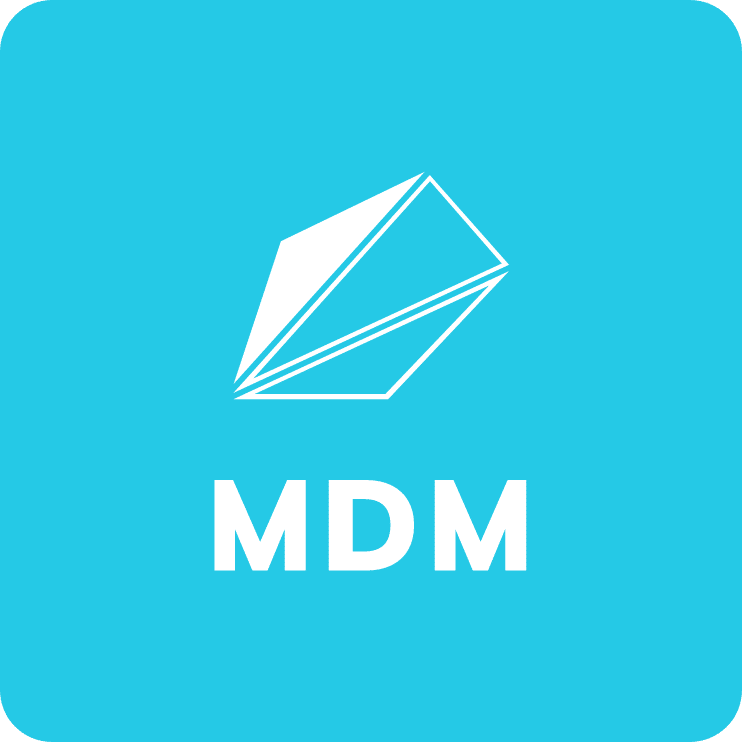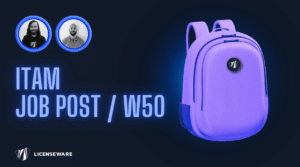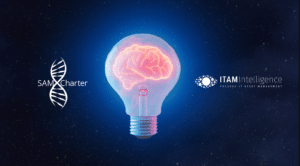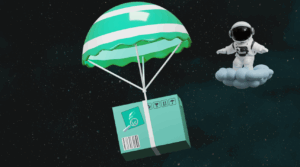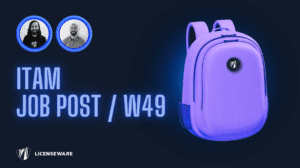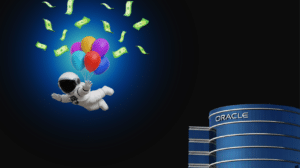SAM Spotlight: Microsoft SQL Server
About: Licenseware specializes in license analysis automation and development to get licensing insights, from any data source, in minutes. Find out more about delivering better services on our website ?
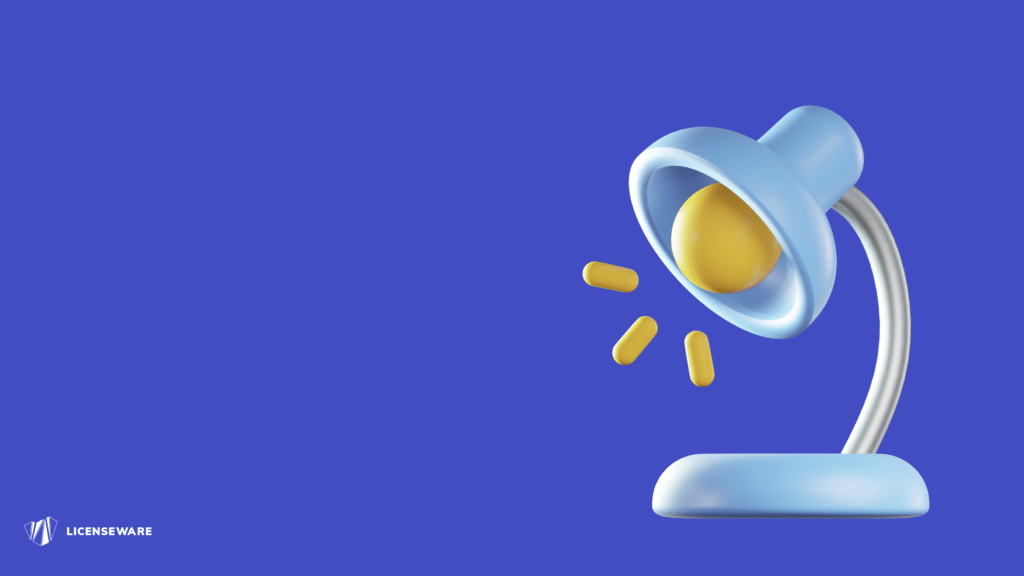
Short history
Microsoft SQL Server is a database management system (DBMS) that Microsoft first released in 1989. It was initially called “SQL Server 1.0” and was designed to run on top of the OS/2 operating system.
In 1992, Microsoft released SQL Server 4.2 for Windows NT, the first version of SQL Server to run on the Windows operating system. This version also introduced the concept of “client-server” computing, where the database management system (DBMS) software runs on a central server, and client applications connect to the server to access the database.
Over the years, Microsoft has released numerous versions of SQL Server, each with its own features and enhancements. Some of the notable versions include:
- SQL Server 7.0 (released in 1998): This version introduced several new features such as indexing, triggers, and creating stored procedures and views.
- SQL Server 2000 (released in 2000): This version introduced support for XML data and improved security and scalability.
- SQL Server 2005 (released in 2005): This version introduced support for .NET Framework, as well as several new features such as “Integration Services” for data integration and “Reporting Services” for creating and managing reports.
- SQL Server 2008 (released in 2008): This version introduced support for spatial data, as well as several new features such as “Data Auditing” and “Resource Governor”.
- SQL Server 2012 (released in 2012): This version introduced support for “AlwaysOn” availability groups, as well as several new features such as “ColumnStore Index” and “Data Quality Services”.
- SQL Server 2014 (released in 2014): This version introduced support for in-memory processing, as well as several new features such as “Buffer Pool Extension” and “Delayed Durability”.
- SQL Server 2016 (released in 2016): This version introduced support for “Stretch Database” which allows users to store historical data in Azure, as well as several new features such as “Always Encrypted” and “PolyBase”.
- SQL Server 2017 (released in 2017): This version introduced support for graph data and machine learning (Python was added as a supported language), as well as several new features such as “Adaptive Query Processing” and “Resumable Online Index Rebuilds”.
- SQL Server 2019 (released in 2019), introduced Big Data Clusters, improvements to the “Intelligent Database,” enhanced monitoring capabilities, updated developer tools, and updates/enhancements for Linux-based installations.
- SQL Server 2022 (released in 2022), includes enhancements to analytics, the ability to recover data in the event of a disaster using Azure, the “Purview” unified data governance and management service, and internal improvements that increase the speed and resilience of the database.
The evolution of SQL Server licensing over time
The licensing of Microsoft SQL Server has changed over time as new versions and editions have been released. In general, the licensing of SQL Server has followed a few key trends:
- The movement towards a per-core-based licensing model: Starting with SQL Server 2016, Microsoft moved towards a per-core-based licensing model, where users are required to purchase a certain number of core licenses based on the number of cores in the processor. Prior to this, SQL Server was primarily licensed on a per-processor basis.
- Introduction of cloud-based offerings: In recent years, Microsoft has introduced several cloud-based offerings for SQL Server, such as Azure SQL Database and Azure SQL Managed Instance. These offerings allow users to purchase a subscription-based license and use SQL Server in the cloud rather than purchasing and managing their own on-premises infrastructure.
- Changes to edition and feature availability: Over time, Microsoft has introduced new editions of SQL Server with different feature sets, and the availability of certain features has varied by edition. For example, SQL Server 2017 introduced a new “Express Edition with Advanced Services” which includes additional features such as reporting and full-text search, as compared to the standard “Express Edition”.
- Changes to licensing terms and policies: Microsoft has made various changes to the terms and policies related to SQL Server licensing over the years. For example, in 2016, Microsoft changed the licensing of SQL Server in Azure Virtual Machines, and in 2018, they introduced a new licensing policy for SQL Server on Linux.
It’s crucial to be aware that the licensing terms and policies for SQL Server may differ based on the edition and version being used, as well as the deployment scenario.
Psst 💬
Need help in understanding your Microsoft Licensing? Licenseware creates great licensing content, but even better data analysis automations!
Get licensing insights in minutes today using our apps ⏱️
Or book a call with one of our licensing specialists 🤙🏻
SQL Server licensing metrics overview
The licensing metrics for Microsoft SQL Server vary depending on the specific version and edition. In general, the licensing metrics for SQL Server can be grouped into the following categories:
- Processor-based (legacy): Some versions of SQL Server are licensed on a per-processor basis, where users are required to purchase a certain number of processor licenses based on the number of processors in the server where SQL Server is installed.
- Core-based: Starting with SQL Server 2016, Microsoft moved towards a per-core-based licensing model, where users are required to purchase a certain number of core licenses based on the number of cores in the processor.
- Server + Client Access Licenses (CALs) (legacy): Some versions of SQL Server are licensed on a per-server basis, with the option to purchase additional Client Access Licenses (CALs) for each user or device that connects to the server.
- Subscription-based: Some cloud-based offerings of SQL Server, such as Azure SQL Database and Azure SQL Managed Instance, are licensed on a subscription-based model, where users pay a monthly or annual fee to use the service.
It’s important to note that the specific licensing metrics for SQL Server may vary depending on the specific version and edition, as well as the specific deployment scenario (e.g. on-premises, cloud-based, etc.). It’s always a good idea to review the current licensing terms and policies to ensure compliance with the terms of your SQL Server license.
How does SQL Server functionality compare with Oracle Database and IBM DB2?
Microsoft SQL Server, Oracle Database, and IBM DB2 are all database management systems (DBMSs) that are used to store and manage data. They offer similar functionality, such as the ability to create and manage databases, tables, and indexes, and to run queries and stored procedures. However, there are some differences in the specific functionality offered by each DBMS:
- SQL Server is a comprehensive DBMS that is used for a wide range of workloads, including data warehousing, business intelligence, and online transaction processing (OLTP). It includes several features such as support for in-memory processing, data warehousing, and business intelligence, as well as integration with Microsoft’s .NET Framework.
- Oracle Database is a widely-used DBMS that is known for its high performance and scalability. It includes several features such as support for spatial data, data warehousing, and business intelligence, as well as integration with Oracle’s PL/SQL programming language.
- IBM DB2 is a comprehensive DBMS that is used for a wide range of workloads, including data warehousing, business intelligence, and online transaction processing (OLTP). It includes several features such as support for in-memory processing, data warehousing, and business intelligence, as well as integration with IBM’s programming languages and tools.
It’s important to note that the specific functionality offered by a DBMS can vary depending on the specific version and edition, as well as the specific deployment scenario (e.g. on-premises, cloud-based, etc.). It’s always a good practice to review the available features and capabilities of each DBMS to determine the best fit for your specific needs.
How does SQL Server pricing compare with Oracle Database and IBM DB2?
Comparing the pricing of different database management systems (DBMSs), such as Microsoft SQL Server, Oracle Database, and IBM DB2, can be complex as the pricing models for these systems vary. In general, the pricing for these systems is based on a combination of factors, including:
- License model: The license model for a DBMS refers to the way in which the software is licensed and how users are charged for it. For example, some DBMSs may be licensed on a per-processor or per-core basis, while others may be licensed on a subscription-based model.
- Edition: Each DBMS typically offers multiple editions, each with its own set of features and pricing. For example, the “Enterprise Edition” of a DBMS may offer more features and be more expensive than the “Standard Edition”.
- Deployment scenario: The deployment scenario for a DBMS, such as on-premises or in the cloud, can also affect the pricing. For example, some DBMSs may offer different pricing for on-premises and cloud-based deployments, or for different types of cloud-based deployments (e.g. virtual machines vs. managed services).
Free alternatives to SQL Server
There are several free alternatives to Microsoft SQL Server that can be used for storing and managing data. Some examples include:
- MySQL is an open-source DBMS that is widely used for web-based applications. It is available under the GNU General Public License (GPL) and is free to use, distribute, and modify.
- PostgreSQL is an open-source DBMS that is known for its support for advanced features such as triggers, stored procedures, and views. It is available under the PostgreSQL License and is free to use, distribute, and modify.
- SQLite is an open-source DBMS that is widely used for embedded applications. It is available under the SQLite Public Domain Dedication and is free to use, distribute, and modify.
- MariaDB is an open-source DBMS that is a fork of MySQL and is compatible with MySQL databases. It is available under the GNU General Public License (GPL) and is free to use, distribute, and modify.
- Apache Derby is an open-source DBMS that is written in Java and is suitable for use in embedded applications. It is available under the Apache License and is free to use, distribute, and modify.
It’s important to note that while these DBMSs are free to use, they may have limitations in terms of performance, scalability, and the availability of certain features as compared to paid DBMSs such as SQL Server. Comparing the specific features and capabilities of each DBMS to determine the best fit for your specific needs is essential.
Learn about Licensewares automated Microsoft license analysis apps here
If you find our articles useful, register for our monthly newsletter for regular industry insights 👇

